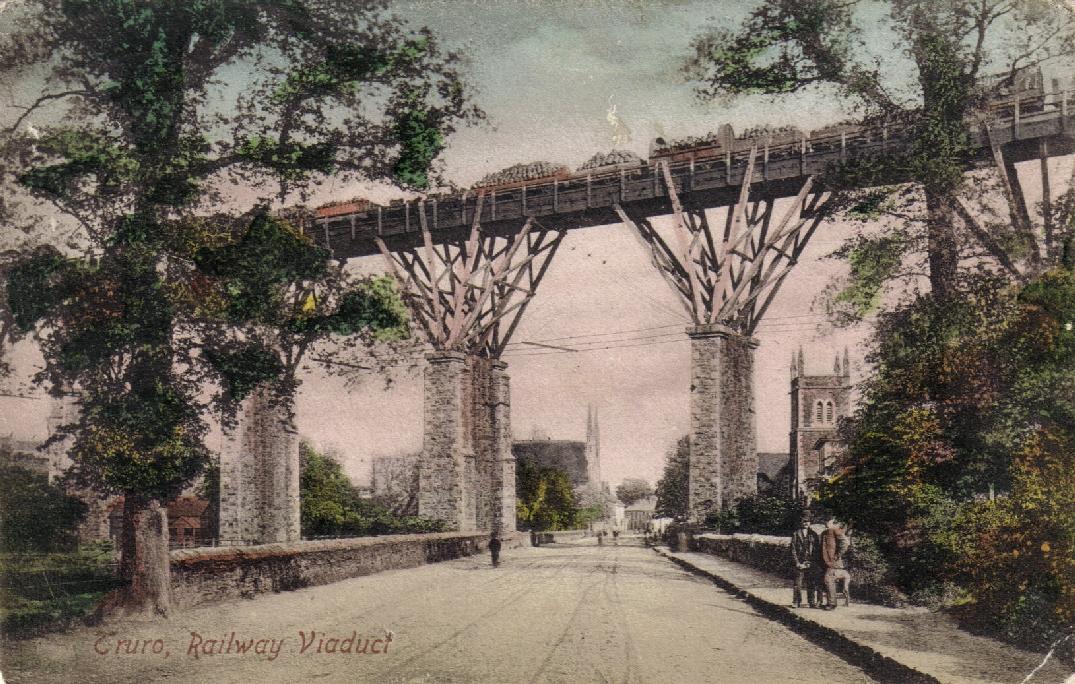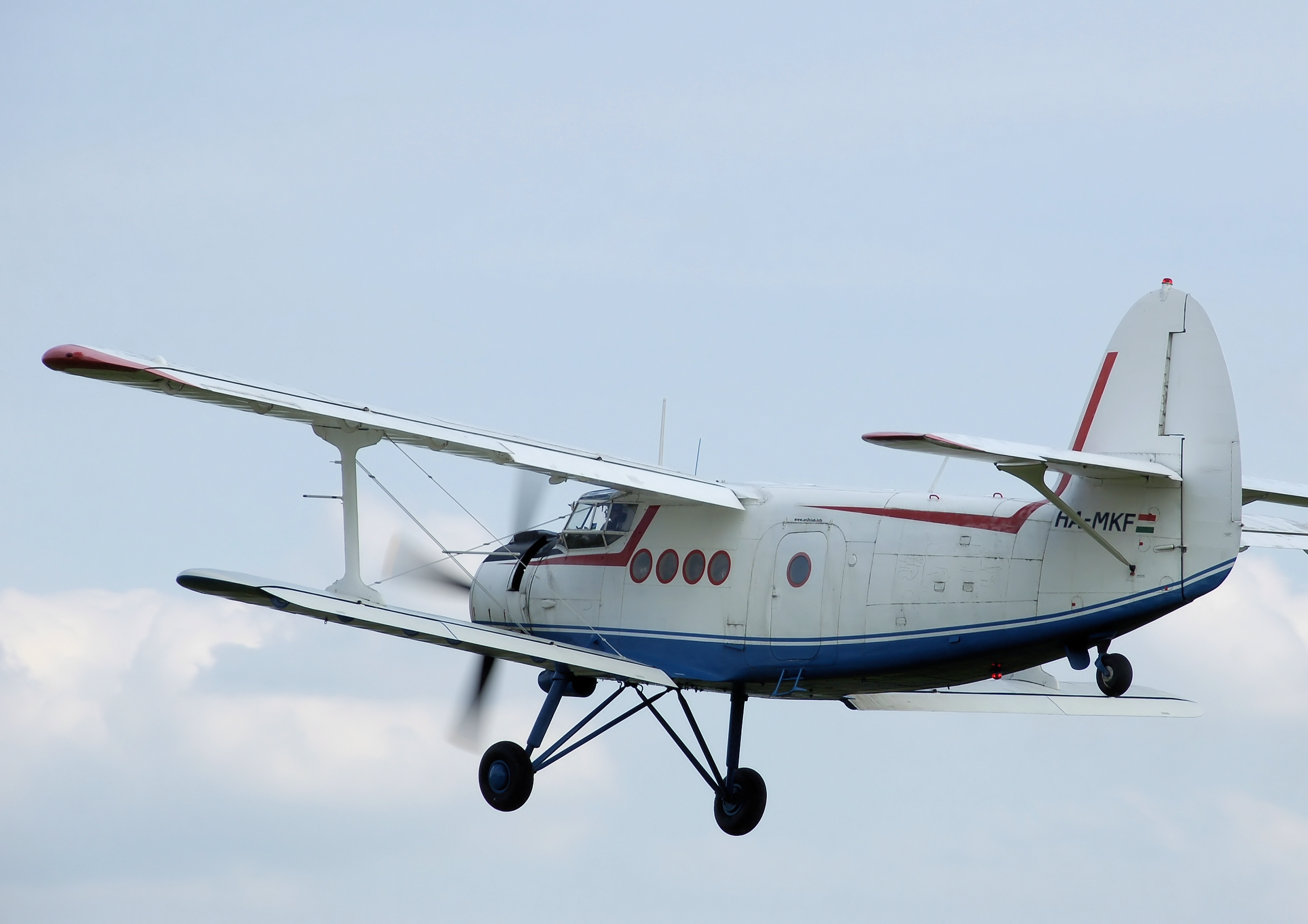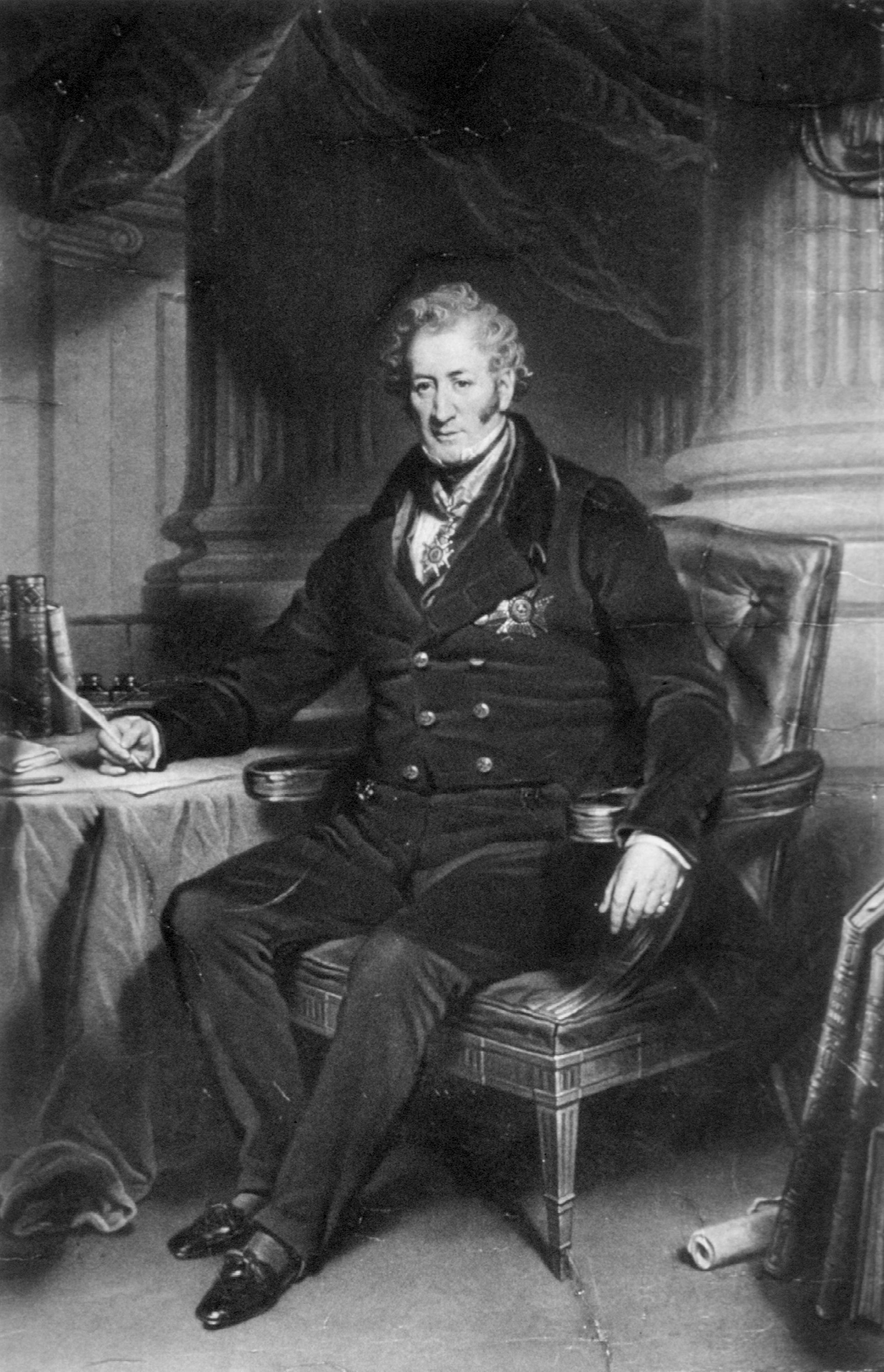|
Cornwall Railway Viaducts
The Cornwall Railway company constructed a railway line between Plymouth and Truro in the United Kingdom, opening in 1859, and extended it to Falmouth in 1863. The topography of Cornwall is such that the route, which is generally east–west, cuts across numerous deep river valleys that generally run north–south. At the time of construction of the line, money was in short supply due to the collapse in confidence following the railway mania, and the company sought ways of reducing expenditure. On the advice of the Victorian railway engineer Isambard Kingdom Brunel, they constructed the river crossings in the form of wooden viaducts, 42 in total, consisting of timber deck spans supported by fans of timber bracing built on masonry piers. This unusual method of construction substantially reduced the first cost of construction compared to an all-masonry structure, but at the cost of more expensive maintenance. Replacement of the timber viaducts by all-masonry structures began in ... [...More Info...] [...Related Items...] OR: [Wikipedia] [Google] [Baidu] |
Pinus Classification
''Pinus'', the pines, is a genus of approximately 111 extant tree and shrub species. The genus is currently split into two subgenera: subgenus ''Pinus'' (hard pines), and subgenus ''Strobus'' (soft pines). Each of the subgenera have been further divided into sections based on chloroplast DNA sequencing and whole plastid genomic analysis. Older classifications split the genus into three subgenera – subgenus ''Pinus'', subgenus ''Strobus'', and subgenus ''Ducampopinus'' ( pinyon, bristlecone and lacebark pines) – based on cone, seed and leaf characteristics. DNA phylogeny has shown that species formerly in subgenus ''Ducampopinus'' are members of subgenus ''Strobus'', so ''Ducampopinus'' is no longer used. The species of subgenus ''Ducampopinus'' were regarded as intermediate between the other two subgenera. In the modern classification, they are placed into subgenus ''Strobus'', yet they did not fit entirely well in either so they were classified in a third subgenu ... [...More Info...] [...Related Items...] OR: [Wikipedia] [Google] [Baidu] |
Truss
A truss is an assembly of ''members'' such as beams, connected by ''nodes'', that creates a rigid structure. In engineering, a truss is a structure that "consists of two-force members only, where the members are organized so that the assemblage as a whole behaves as a single object". A "two-force member" is a structural component where force is applied to only two points. Although this rigorous definition allows the members to have any shape connected in any stable configuration, trusses typically comprise five or more triangular units constructed with straight members whose ends are connected at joints referred to as ''nodes''. In this typical context, external forces and reactions to those forces are considered to act only at the nodes and result in forces in the members that are either tensile or compressive. For straight members, moments (torques) are explicitly excluded because, and only because, all the joints in a truss are treated as revolutes, as is necessary for ... [...More Info...] [...Related Items...] OR: [Wikipedia] [Google] [Baidu] |
Deep Foundation
A deep foundation is a type of foundation that transfers building loads to the earth farther down from the surface than a shallow foundation does to a subsurface layer or a range of depths. A pile or piling is a vertical structural element of a deep foundation, driven or drilled deep into the ground at the building site. There are many reasons that a geotechnical engineer would recommend a deep foundation over a shallow foundation, such as for a skyscraper. Some of the common reasons are very large design loads, a poor soil at shallow depth, or site constraints like property lines. There are different terms used to describe different types of deep foundations including the pile (which is analogous to a pole), the pier (which is analogous to a column), drilled shafts, and caissons. Piles are generally driven into the ground in situ; other deep foundations are typically put in place using excavation and drilling. The naming conventions may vary between engineering discip ... [...More Info...] [...Related Items...] OR: [Wikipedia] [Google] [Baidu] |
Trestle Support
In structural engineering, a trestle support (or simply trestle) is a structural element with rigid beams forming the equal sides of two parallel isosceles triangles, joined at their apices by a plank or beam. Sometimes additional rungs are stretched between the two beams. A pair of trestle legs can support one or several boards or planks, forming a trestle table or trestle desk. A network of trestle supports can serve as the framework for a trestle bridge, and a trestle of appropriate size to hold wood for sawing is known as a sawhorse. Trestle table A trestle table is a table with trestle legs. In shape and manufacture, it sometimes resembles variations of the antique field desk, which were used by officers close to the battlefield. Trestle legs come in two kinds: *Fixed trestle legs, where the angle between the legs is a fixed joint. *Folding trestle legs, where the angle is hinged, to make them more compact and portable. In the United States, a table or desk supported b ... [...More Info...] [...Related Items...] OR: [Wikipedia] [Google] [Baidu] |
Beam (structure)
A beam is a structural element that primarily resists Structural load, loads applied laterally to the beam's axis (an element designed to carry primarily axial load would be a strut or column). Its mode of Deflection (engineering), deflection is primarily by bending. The loads applied to the beam result in reaction forces at the beam's support points. The total effect of all the forces acting on the beam is to produce shear forces and bending moments within the beams, that in turn induce internal stresses, strains and deflections of the beam. Beams are characterized by their manner of support, profile (shape of cross-section), equilibrium conditions, length, and their material. Beams are traditionally descriptions of building or civil engineering structural elements, where the beams are horizontal and carry vertical loads. However, any structure may contain beams, for instance automobile frames, aircraft components, machine frames, and other mechanical or structural systems. In th ... [...More Info...] [...Related Items...] OR: [Wikipedia] [Google] [Baidu] |
Strut
A strut is a structural component commonly found in engineering, aeronautics, architecture and anatomy. Struts generally work by resisting longitudinal compression, but they may also serve in tension. Human anatomy Part of the functionality of the clavicle is to serve as a strut between the scapula and sternum, resisting forces that would otherwise bring the upper limb close to the thorax. Keeping the upper limb away from the thorax is vital for its range of motion. Complete lack of clavicles may be seen in cleidocranial dysostosis, and the abnormal proximity of the shoulders to the median plane exemplifies the clavicle's importance as a strut. Architecture and construction Strut is a common name in timber framing for a support or brace of scantlings lighter than a post. Frequently struts are found in roof framing from either a tie beam or a king post to a principal rafter. Struts may be vertically plumb or leaning (then called canted, raking, or angled) and may be straight ... [...More Info...] [...Related Items...] OR: [Wikipedia] [Google] [Baidu] |
Pier (architecture)
A pier, in architecture, is an upright support for a structure or superstructure such as an arch or bridge. Sections of structural walls between openings (bays) can function as piers. External or free-standing walls may have piers at the ends or on corners. Description The simplest cross section of the pier is square, or rectangular, but other shapes are also common. In medieval architecture, massive circular supports called drum piers, cruciform (cross-shaped) piers, and compound piers are common architectural elements. Columns are a similar upright support, but stand on a round base. In buildings with a sequence of bays between piers, each opening (window or door) between two piers is considered a single bay. Bridge piers Single-span bridges have abutments at each end that support the weight of the bridge and serve as retaining walls to resist lateral movement of the earthen fill of the bridge approach. Multi-span bridges require piers to support the ends of spans betwe ... [...More Info...] [...Related Items...] OR: [Wikipedia] [Google] [Baidu] |
Tie Rod
A tie rod or tie bar (also known as a hanger rod if vertical) is a slender structural unit used as a tie and (in most applications) capable of carrying tensile loads only. It is any rod or bar-shaped structural member designed to prevent the separation of two parts, as in a vehicle. Subtypes and examples of applications * In airplane structures, tie rods are sometimes used in the fuselage or wings. * Tie rods are often used in steel structures, such as bridges, industrial buildings, tanks, towers, and cranes. * Sometimes tie rods are retrofitted to bowing or subsiding masonry walls (brick, block, stone, etc.) to keep them from succumbing to lateral forces. * The rebar used in reinforced concrete is not referred to as a "tie rod", but it essentially performs some of the same tension-force-counteracting purposes that tie rods perform. * In automobiles, the ''tie rods'' are part of the steering mechanism. They differ from the archetypal tie rod by both pushing and pulling (operatin ... [...More Info...] [...Related Items...] OR: [Wikipedia] [Google] [Baidu] |
Wrought Iron
Wrought iron is an iron alloy with a very low carbon content (less than 0.08%) in contrast to that of cast iron (2.1% to 4%). It is a semi-fused mass of iron with fibrous slag Inclusion (mineral), inclusions (up to 2% by weight), which give it a wood-like "grain" that is visible when it is etched, rusted, or bent to structural failure, failure. Wrought iron is tough, malleable, ductile, corrosion resistant, and easily forge welding, forge welded, but is more difficult to welding, weld electrically. Before the development of effective methods of steelmaking and the availability of large quantities of steel, wrought iron was the most common form of malleable iron. It was given the name ''wrought'' because it was hammered, rolled, or otherwise worked while hot enough to expel molten slag. The modern functional equivalent of wrought iron is Carbon steel#Mild or low-carbon steel, mild steel, also called low-carbon steel. Neither wrought iron nor mild steel contain enough carbon to be ... [...More Info...] [...Related Items...] OR: [Wikipedia] [Google] [Baidu] |
Cast Iron
Cast iron is a class of iron–carbon alloys with a carbon content more than 2%. Its usefulness derives from its relatively low melting temperature. The alloy constituents affect its color when fractured: white cast iron has carbide impurities which allow cracks to pass straight through, grey cast iron has graphite flakes which deflect a passing crack and initiate countless new cracks as the material breaks, and ductile cast iron has spherical graphite "nodules" which stop the crack from further progressing. Carbon (C), ranging from 1.8 to 4 wt%, and silicon (Si), 1–3 wt%, are the main alloying elements of cast iron. Iron alloys with lower carbon content are known as steel. Cast iron tends to be brittle, except for malleable cast irons. With its relatively low melting point, good fluidity, castability, excellent machinability, resistance to deformation and wear resistance, cast irons have become an engineering material with a wide range of applications and are ... [...More Info...] [...Related Items...] OR: [Wikipedia] [Google] [Baidu] |
William Burnett
Sir William Burnett, KCB, FRS (16 January 1779 – 16 February 1861) was a British physician who served as Physician-General of the Royal Navy. Early life Burnett was born in Montrose, Scotland on 16 January 1779 and attended Montrose Grammar School. He was appointed surgeon's mate on board the ''Edgar'' soon after his arrival at Edinburgh to pursue his medical studies. Later he served as assistant-surgeon in the ''Goliath'' under Sir John Jervis, and was present at St. Vincent and the siege of Cadiz. He also served with distinction at battles of the Nile and Trafalgar. Prison hospitals Between 1805 and 1810 Burnett was in charge of the hospitals for prisoners of war at Portsmouth and Forton. His diligence in his most arduous hospital duties recommended Burnett in 1810 for the office of Physician and Inspector of Hospitals to the Mediterranean Fleet. His health deteriorated and he returned to England towards the end of 1813; but in March 1814 he was able to undertake the m ... [...More Info...] [...Related Items...] OR: [Wikipedia] [Google] [Baidu] |








